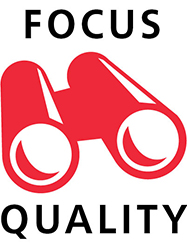Is it even possible to manage risk? The infamous residual risk never goes away, does it? We will shed a light on all these questions with respect to the world of translation.
If you consider translation an integral part of entrepreneurial information management and therefore translation, technical writing, and knowledge management as closely interlinked, the urgent need for professional risk management soon becomes clear.
Commercial dictionaries define risk management as the approach to dealing with any risks that may arise from the management process and implementation processes within an enterprise. As is often the case with sensitive issues, standards and certifications provide more specific points of reference. For instance, ISO 9001 shows awareness of the risk-based thinking and actions that should be integrated into the requirements for introducing, implementing, maintaining, and continuously improving a quality management system. Specially for translations, ISO 17100 is intended to guarantee a high-quality translation process. Besides the question of how quality is defined in the first place, ISO 17100 does not include a risk assessment. It mainly features specifications, which are used to organize in-office processes related to translation. These concern structures and project steps such as how to handle specifications, queries, and reviews on the client's side. Data security and the observance of confidentiality are also dealt with.

To sum things up: on the one hand, it is about the processes and workflows that must be observed. Meanwhile, on the other hand is the practical connection to quality management. Ultimately, even a perfectly and meticulously observed process is no guarantee against poor quality and mistakes.
Processes Involved in a Translation Project
To take as practical an approach as possible, we will run through a typical process workflow involved in a translation project. As soon as a new project is commissioned, the risk analysis starts. The identified risks are then evaluated on a risk scale (e.g., low – medium – high or quantitatively, e.g., in terms of potential damage). Generally speaking, the risk can then be
- avoided, e.g., deadlines that cannot be met can be renegotiated upon order acceptance; if necessary, the order is rejected
- reduced, e.g., if for example a new translator is used, an additional quality control step must be taken or
- accepted, e.g., if the risk is very low
However, it is important that all these decisions are based on clear management specifications, and that experiences and findings are collected, evaluated, and made accessible centrally. If applicable, they also need to be carried over into the risk management guidelines. This completes the feedback loop.
Even if the processes and formal risk management have been taken care of, there will always be a certain level of residual risk. However, not every text type requires the same level of attention in terms of risk management. For instance, instructions for using dangerous machinery are "riskier" than a text about the company history for the website. At any rate, which text types are classified as critical and which as non-critical varies from company to company – there are no general guidelines for this.
There are also some obvious points of intersection with quality management here. For instance, if a company does not have functioning terminology management, the risk is clear. For the company, it is once again a matter of managing the risk – or better still eliminating it by introducing terminology management.



